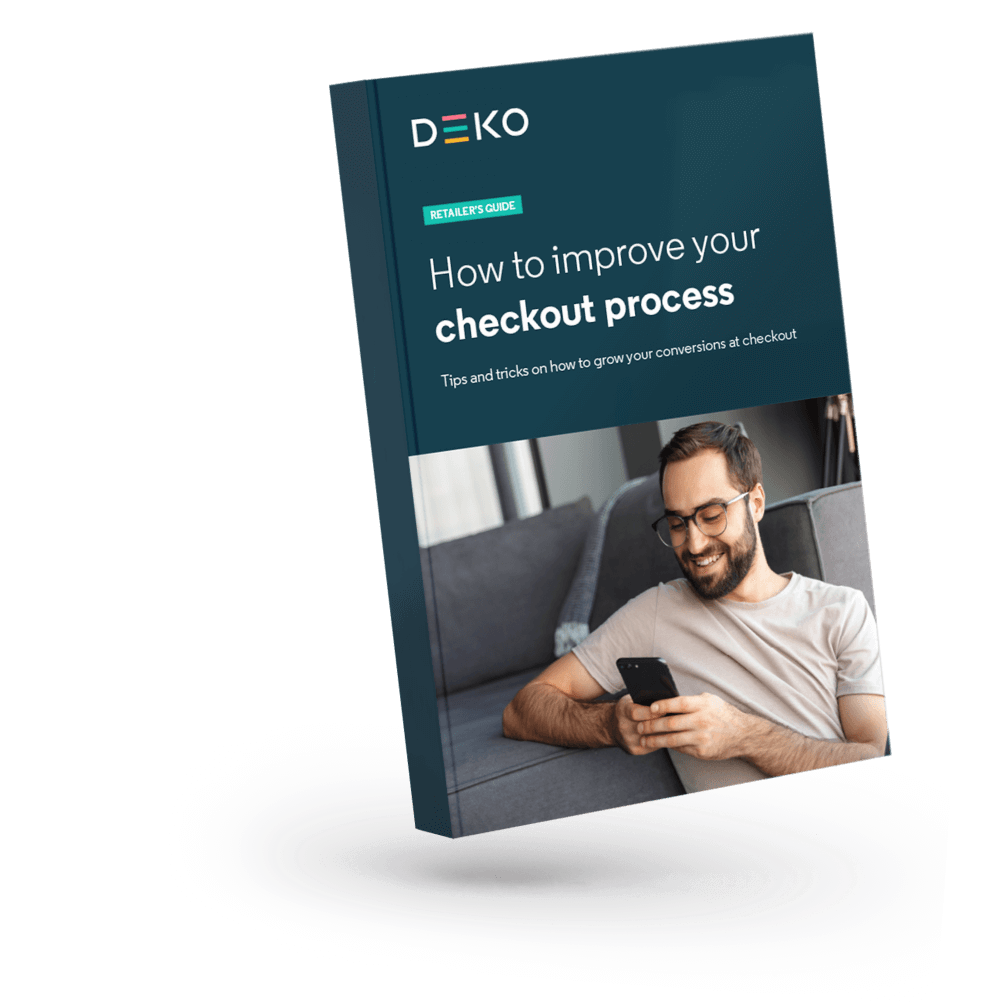Shopping cart abandonment can be as high as 84 per cent. Let that sink in for a moment because it’s a considerable number. People who go through to the checkout stage but don’t complete their purchase are the bane of many merchant’s lives. No retailer is immune, either: it can happen to businesses of all shapes and sizes.
There’s nothing more frustrating than having carts left behind, and for some businesses it can be the difference between profit and loss. You need your customers to go through the entire process and click that “confirm purchase” button at the very last stage of their buying journey.
Some brands spend thousands reinventing their website in an effort to create a better experience. Others offer incentives at checkout to get people completing their purchases. Yet, all those improvements will be in vain if your customer doesn’t have a good enough reason to see the transaction through to the end.
Trying to understand customer behaviour is a continuous learning experience for merchants. Doing so allows you to improve the checkout process and remove friction from buying your products and services. A solid user experience that empowers the customer and encourages them to complete their checkout experience is achievable. But how do you do it? We’re taking a deep dive into the world of checkout processes to see how factors like flexible finance can create a more seamless buying experience.
In this retailer’s guide, you will learn how to improve your checkout process, increase average order value and drive up sales with more checkout completions and larger basket sizes.
Why is average order value (AOV) so important?
Why AOV matters
The AOV essentially sets the tone for your company. It helps evaluate your pricing strategy and online marketing efforts with the metrics needed to measure the long-term value of individual customers.
A good AOV points to everything going in the right direction, and a working strategy. An AOV that needs improvements, however, could point to several roadblocks stopping customers from completing purchases at checkout.
An increase in AOVs for merchants signals higher profit margins. Therefore, all retailers should be looking to build on their AOV and improve it where necessary so they can see a rise in their profit and revenue growth.
Understanding shopper behaviour
You need to understand the mindset of your customers before you can begin giving them what they need. Knowing and understanding your AOV offers further insight into shopper behaviours and how your customers interact with products and services.
As soon as you realise what customers spend regularly, you can begin planning your pricing and marketing around improving the average overall spend. Staying consistent with your AOV monitoring means a potential increase in revenue and greater profitability.
How to improve AOV
There are two primary ways to increase the average order value of your customer: buy more or purchase more expensive products. Getting people to buy more can often be tricky, but increasing the price of products purchased is attainable with trust.
Once customers trust your business, they will be more inclined to purchase those higher-ticket items. Offering flexible finance options is one way to do this, and it’s a payment method that is becoming increasingly important forshoppers worldwide.
Customers who see they have more ways to pay are likely to spend more, as they feel empowered to make a significant purchase knowing they can repay the cost in a manner that suits them. This helps increase trust, as they see your brand as one that understands the needs of its consumers.
Making AOV work for you
A successful AOV strategy can help boost your bottom lines and drive the
number of regular sales. But in order to achieve a higher AOV, first, you need to understand why customers drop out at the checkout stage and how to improve your drop-off rates.

Why do consumers abandon the checkout stage?
We have already deciphered that cart abandonment is a huge problem for retailers, but why do customers drop off at the most vital stage in the buying journey? The truth is that there are many reasons why customers place an item in their cart and abandon the checkout. These include:
Issues with shipping
For some consumers, checkout abandonment is caused by shipping. It might be that shipping is too expensive, or the merchant doesn’t offer a service to the buyer’s destination. From the merchant’s point of view, there isn’t much that can be done for the latter. When it comes to the former and deciding on shipping costs, however, it may be worth reviewing to see if you can make any changes to create a more attractive shipping process.
Creating an account
Modern consumers desire one-click options for buying products and services. Creating an account takes too much effort for many and slows down the process. Therefore, customers can drop off at the checkout stage if they
need to create an account with their details and a password. This is especially true if they don’t regularly shop with the merchant and only want to make a one-off payment.
Need longer to think about their decision
Some customers like to take their time deliberating about their potential purchases. This is a common occurrence, yet it’s not uncommon for retailers to create acquisition emails reminding customers about the item they left in their basket. Around 1.8 billion people shop online worldwide, and a portion of them take longer to make a purchase decision.
Item too expensive
For many, it’s a case of the price being too high. Customers may want to complete their purchase but are put off by the price tag. Impulse purchases aren’t as common online, and what seemed like a good idea initially could end with some revisionism and a decision against buying a product or service because it’s too expensive.
“10 million Brits said they avoided buying from retailers that don’t offer BNPL options at the checkout.”
Preferred payment option not offered
A growing number of consumers prefer to pay with alternative payment methods, such as buy now, pay later (BNPL). If their preferred options aren’t available with the retailer, they could very well decide against purchasing with them. That’s because some of the most important buying demographics, like millennials and Generation Z, are becoming increasingly aware of their finances and shunning traditional lines of credit. A recent survey discovered that almost 10 million Brits said they avoided buying from retailers that don’t offer BNPL options at the checkout. Therefore, retailers who fail to offer these options at checkout are already playing catch up against the competition.
Finding where the friction lies
Checkout issues such as resistance to creating an account are fairly easy fixes and only may require a few backend changes to your website in order to improve the shopping process. Other problems, however, need more examination and a strategy put in place to combat them – especially when it comes to higher-priced items and a lack of alternative payment methods. Improving the checkout process can eliminate friction and increase customer confidence to go through the entire buying process. In the next chapter, we’ll look at how to do it and increase your sales with fewer cart abandonments.
How to improve the checkout process
You know the problems causing customers to abandon their carts, but what are the solutions? It all comes down to the user experience (UX) of the customer. The UX covers many aspects of the buying experience, from a fluid web design that’s easy to use to smart options for paying at checkout.
Checkout placement
Checking out needs to be easy and visible. Customers should be able to navigate to your checkout without any issues. One way to do that involves clearly labelling your checkout buttons.
If the checkout buttons aren’t visible, then you’ve got a problem, and customers will exit before completing their purchase. Try including checkout buttons on both the top and bottom of the screen to increase visibility and make it easy for customers to identify where they need to pay.
Having the checkout button at the top and bottom will ensure it stays in their line of vision, regardless of where they’re looking on the screen. It means customers are always mindful of it even if they decide to continue shopping.
Make the checkout secure
Around 78 per cent of remote purchase fraud is committed online. Safeguarding your checkout experience against potential fraud should be a high priority, as customers need to feel safe while using your website to buy products and services.
Pages that appear untrustworthy will see buyers taking their business elsewhere. Therefore, all checkout pages across your website should be secure, and it’s in your best interest to feature security badges like Norton and McAfee to show what you’re doing to protect customers.
Reduce the number of forms
One-click payments are becoming increasingly popular with shoppers, as it gives them a quick and easy way to purchase items. Even if you don’t offer one-click payments, you should aim to reduce the number of forms customers need to fill out at checkout.
You don’t want to give customers a chance to change their minds at checkout by asking them to complete several forms. Doing so will lower conversion rates and increase friction in the checkout process.
Simplify your checkout by eliminating unnecessary steps. When going through the checkout experience, ask yourself which forms really need to be there. If they aren’t essential, get rid of them for a more seamless checkout experience.
78%
of remote purchase fraud is committed online. Safeguarding your checkout experience against potential fraud should be a high priority
5.5%
Recent studies revealed that conversions jumped from 3.7 per cent to 5.5 per cent when a picture replaced text at checkout.
Offer a mobile-friendly experience
More people are shopping from their mobile phones, with 62 per cent of smartphone owners using their devices to buy products and services online. Technology has made it convenient to shop with mobile devices, and retailers need to ensure their website experience caters to mobile demand.
So if someone lands on your website via their mobile, they should be able to complete a purchase without any issues. Mobile-optimised sites stand a much better chance of seeing more sales than websites where the customers need to use their desktop or laptop to make a purchase.
Use imagery
The checkout stage should also look good, and one way to do that is by
including product images. Fashion brands are particularly good at showing customers what they’re buying at the checkout stage, but it works for any type of product or service.
Imagery can help improve your conversion rates, as they remind customers what they’re buying and reinforce their initial decision. It also looks more aesthetic than mere text writing confirming their purchase.
Consumers are reminded of exactly what they put in their cart, which can also help avoid confusion or mix-up over products if they select the wrong size, colour, etc. Recent studies revealed that conversions jumped from 3.7 percent to 5.5 percent when a picture replaced text at checkout.




